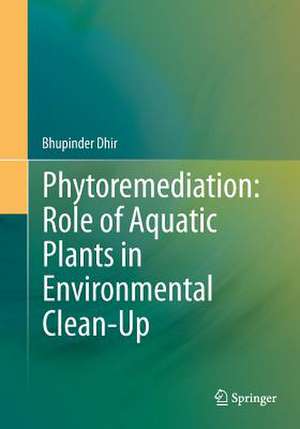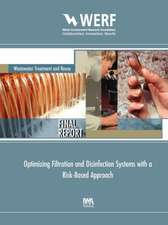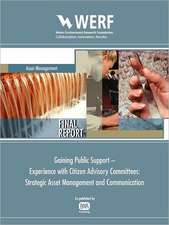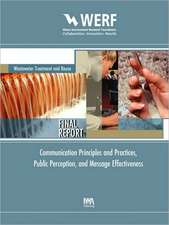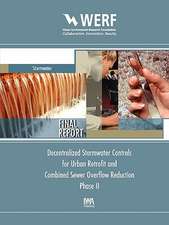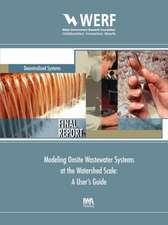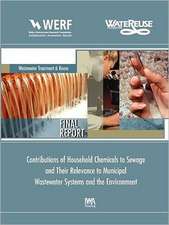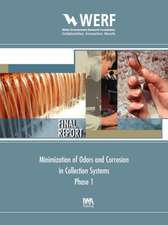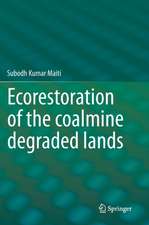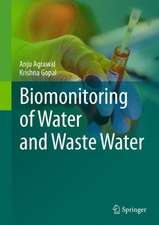Phytoremediation: Role of Aquatic Plants in Environmental Clean-Up
Autor Bhupinder Dhiren Limba Engleză Paperback – 27 aug 2016
| Toate formatele și edițiile | Preț | Express |
|---|---|---|
| Paperback (1) | 633.53 lei 6-8 săpt. | |
| Springer India – 27 aug 2016 | 633.53 lei 6-8 săpt. | |
| Hardback (1) | 640.06 lei 6-8 săpt. | |
| Springer India – 24 iul 2013 | 640.06 lei 6-8 săpt. |
Preț: 633.53 lei
Preț vechi: 745.32 lei
-15% Nou
Puncte Express: 950
Preț estimativ în valută:
121.26€ • 131.76$ • 101.93£
121.26€ • 131.76$ • 101.93£
Carte tipărită la comandă
Livrare economică 21 aprilie-05 mai
Preluare comenzi: 021 569.72.76
Specificații
ISBN-13: 9788132228882
ISBN-10: 813222888X
Pagini: 111
Ilustrații: X, 111 p. 20 illus., 5 illus. in color.
Dimensiuni: 178 x 254 mm
Greutate: 0.23 kg
Ediția:Softcover reprint of the original 1st ed. 2013
Editura: Springer India
Colecția Springer
Locul publicării:New Delhi, India
ISBN-10: 813222888X
Pagini: 111
Ilustrații: X, 111 p. 20 illus., 5 illus. in color.
Dimensiuni: 178 x 254 mm
Greutate: 0.23 kg
Ediția:Softcover reprint of the original 1st ed. 2013
Editura: Springer India
Colecția Springer
Locul publicării:New Delhi, India
Cuprins
Introduction.- Contaminants in aquatic environment.- Wastewater treatment methods.- Bioremediation.- Phytoremediation technology.- Plant species used in phytoremediation technology.- Aquatic plant species and removal of contaminants.- Contaminants removed by aquatic plants.- Major plant species.- Other aquatic plant species.- Mechanism of removal of contaminants by aquatic plants.- Inorganic contaminants.- Organic contaminants. Role of Wetlands.- Constructed wetlands.- Mechanism of contaminant removal.- Contaminants removed by wetlands.- Limitations.- Future.- Future Prospects.- Biotechnological approach.- Limitations .- Cost analysis.- Conclusions and future development.
Notă biografică
Dr. Bhupinder Dhir, has been working as a Scientist at University of Delhi South Campus, India, since last five years. Her academic background is related to botany. Main research interests are in subject areas such as Plant Physiology, Stress Physiology, Ecology and Environment. The main focus of her research is on environmental stress responses in plants and development of strategies for developing eco-friendly wastewater technology by using aquatic plant biomass. Strong research background in the relevant area provides her a specialization and expertise in the development of phytoremediation technology. The quality of research is reflected in research articles published in journals of national and international repute. She has 22 research publications to her credit.
Textul de pe ultima copertă
Contamination of the different components of environment through industrial and anthropogenic activities have guided new eras of research. This has lead to development of strategies/methodologies to curtail/minimize environmental contamination. Research studies conducted all over the globe established that bioremediation play a promising role in minimizing environmental contamination. In the last decade, phytoremediation studies have been conducted on a vast scale. Initial research in this scenario focused on screening terrestrial plant species that remove contaminants from soil and air. Later, scientific community realized that water is a basic necessity for sustaining life on earth and quality of which is getting deteriorated day by day. This initiated studies on phytoremediation using aquatic plants. Role of aquatic plant species in cleaning water bodies was also explored. Many of the aquatic plant species showed potential to treat domestic, municipal and industrial wastewaters and hence their use in constructed wetlands for treating wastewaters was emphasized. The present book contains five chapters. First two chapters provide information about types of contaminants commonly reported in wastewaters and enlists some important and well studied aquatic plant species known for their potential to remove various contaminants from wastewater. Subsequent chapters deal with mechanisms involved in contaminant removal by aquatic plant species, and also provide detailed information about role of aquatic plant species in wetlands. Potential of constructed wetlands in cleaning domestic and industrial wastewaters has also been discussed in detail. The strategy for enhancing phytoremediation capacity of plants by different means and effectiveness of phytoremediation technology in terms of monitory benefits has been discussed in last chapter. Last chapter also emphasizes the future aspects of this technology.
Caracteristici
The book provides natural and environment-friendly solutions to deal with the problem of pollution, which is most relevant in the present time The various plant species with the potential of removing contaminants have been discussed individually Offers potential to apply the process of phytoremediation on a large scale Will be of use not only to researchers but also to professionals working in the field of environmental pollution
